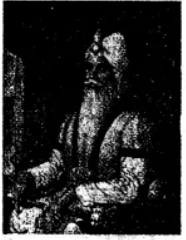Advertisements
Advertisements
प्रश्न
The second phase of Maratha's history was a period of dominance of the Peshwa. In this context answer the following question:
How was the Maratha confederacy established?
उत्तर
A major development at this time was the rise of the prominent Maratha families-the Sindhias, the Bhonsles, the Holkars, and the Gaekwards. The Peshwa divided the erstwhile Mughal provinces into ‘spheres of influence’ and placed them under the chiefs of these Maratha families. These chiefs enjoyed maximum autonomy within their respective regions. The Peshwa was the official head of this loose union of Maratha chiefs which is referred to as the Maratha confederacy.
संबंधित प्रश्न
Fill in the blank:
The Sikhs were organized into a loose confederacy of ______ misls or groups.
Answer the following question in one or two words/sentences:
What is the significance of the Third Battle of Panipat?
Name the four prominent Maratha families in the Maratha confederacy.
Fill in the blank
____________ was the leader of the Sikhs after the death of Guru Govind Singh.
Fill in the blank
___________ was the first Peshwa.
Answer the following question
When and between whom was the Third Battle of Panipat fought? What were its results?
Answer the following question
When was the Battle of Plassey fought? What effect did it have on the position of the English East India Company?
Answer the following question
Who was Haider All? Discuss his achievements.
This is a picture of a great ruler of Punjab.

How did the unite the Sikhs in Punjab?
Match the contents of Column A and Column B
| Column A | Column B |
| 1. Nizam-ul-Mulk | (a) Tiger of Mysore. |
| 2. Shivaji | (b) founded the state of Hyderabad. |
| 3. Tipu Sultan | (c) founder of the Maratha power. |
| 4. Gaekwad | (d) united the Sikhs on the west of river Sutlej. |
| 5. Holkar | (e) Nagpur |
| 6. Scindia | (f) Baroda |
| 7. Bhonsle | (g) Indore |
| 8. Peshwa | (h) Gwalior |
| 9. Ranjit Singh | (i) Poona |
